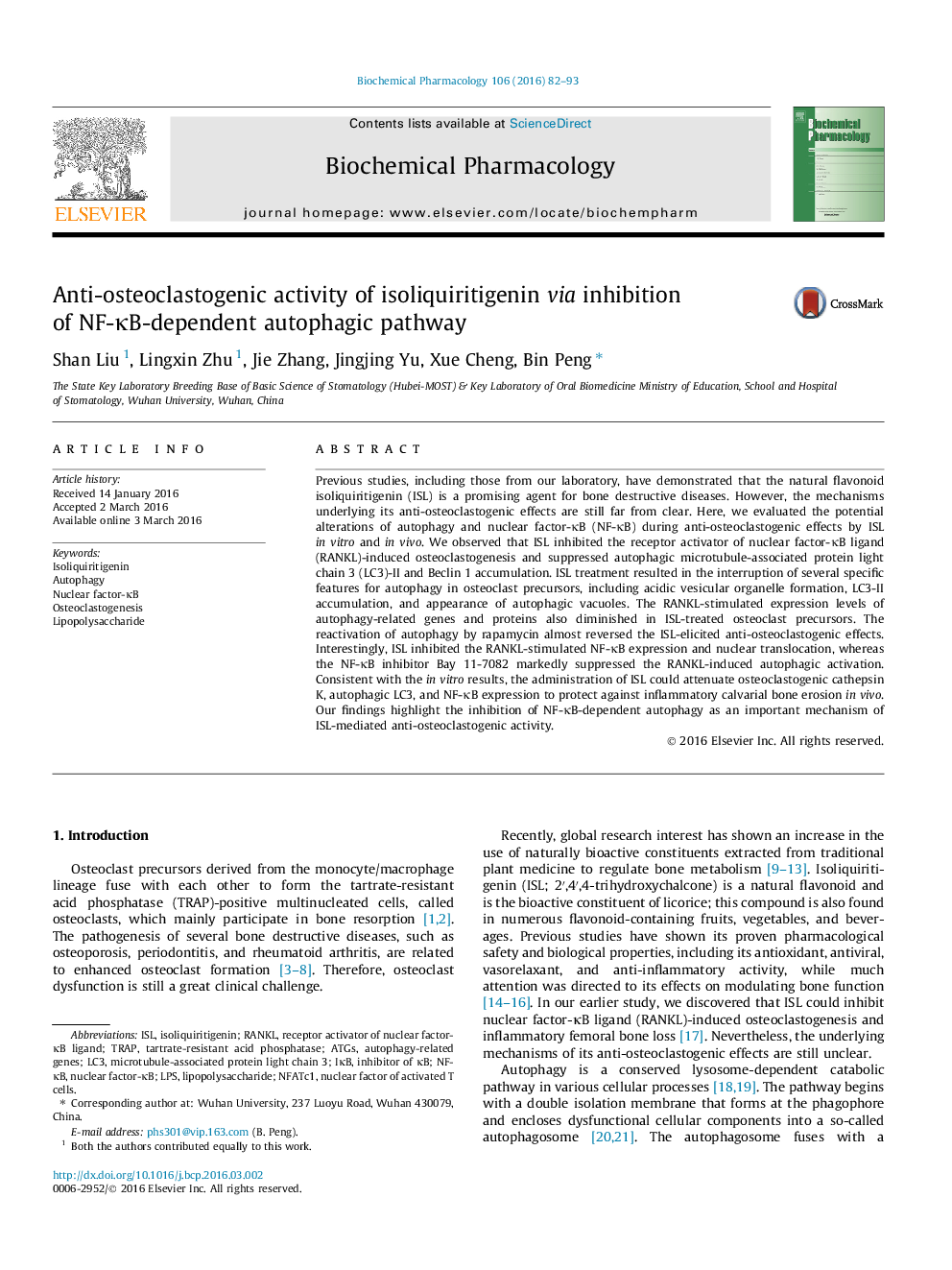| Article ID | Journal | Published Year | Pages | File Type |
|---|---|---|---|---|
| 2511791 | Biochemical Pharmacology | 2016 | 12 Pages |
Previous studies, including those from our laboratory, have demonstrated that the natural flavonoid isoliquiritigenin (ISL) is a promising agent for bone destructive diseases. However, the mechanisms underlying its anti-osteoclastogenic effects are still far from clear. Here, we evaluated the potential alterations of autophagy and nuclear factor-κB (NF-κB) during anti-osteoclastogenic effects by ISL in vitro and in vivo. We observed that ISL inhibited the receptor activator of nuclear factor-κB ligand (RANKL)-induced osteoclastogenesis and suppressed autophagic microtubule-associated protein light chain 3 (LC3)-II and Beclin 1 accumulation. ISL treatment resulted in the interruption of several specific features for autophagy in osteoclast precursors, including acidic vesicular organelle formation, LC3-II accumulation, and appearance of autophagic vacuoles. The RANKL-stimulated expression levels of autophagy-related genes and proteins also diminished in ISL-treated osteoclast precursors. The reactivation of autophagy by rapamycin almost reversed the ISL-elicited anti-osteoclastogenic effects. Interestingly, ISL inhibited the RANKL-stimulated NF-κB expression and nuclear translocation, whereas the NF-κB inhibitor Bay 11-7082 markedly suppressed the RANKL-induced autophagic activation. Consistent with the in vitro results, the administration of ISL could attenuate osteoclastogenic cathepsin K, autophagic LC3, and NF-κB expression to protect against inflammatory calvarial bone erosion in vivo. Our findings highlight the inhibition of NF-κB-dependent autophagy as an important mechanism of ISL-mediated anti-osteoclastogenic activity.
Graphical abstractFigure optionsDownload full-size imageDownload as PowerPoint slide
